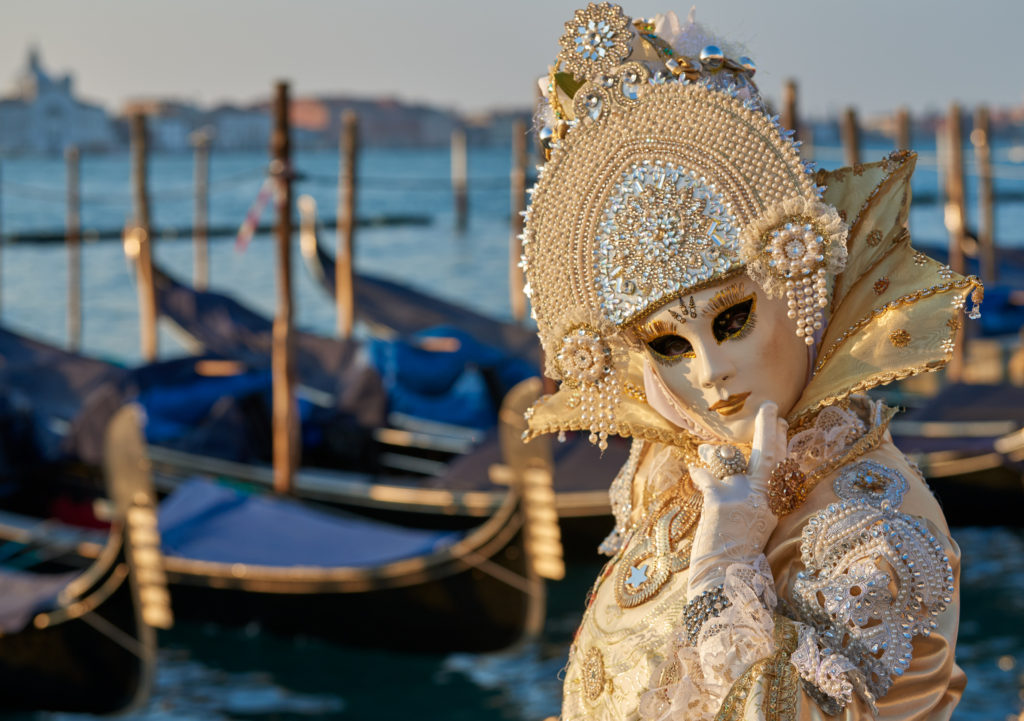
Carnival of Venice. Model: Florine Houee
There are good reasons that 30 million tourists visit Venice every year. But one can avoid the masses by staying away from the Rialto Bridge and Piazza San Marco, visiting in winter, or strolling around between 4:30 and 8:00 in early June, before the monstrous cruise ships disgorge up to 40 thousand people into the city.
On a morning in the Cannaregio, Dorsoduro, and Giudecca, neighbourhoods remote from the congested areas, one can still catch a glimpse of the authentic way Venetian’s go about their business. But the expectation of serious overcrowding had kept me away from visiting the place during Carnival.
The Carnival of Venice, world-famous for its elaborate masks and costumes, is held like all Carnival festivities, in the days prior to Lent. Historically, people would get rid of all of their rich food and get their partying done before the 40 days of Lent; hence the word Carnival, stemming from “carne” and “vale”, meaning “farewell to meat”.
The tradition started in the year 1162 when people celebrated a victory over the Patriarch of Aquileia. During Carnival, the sumptuary laws were suspended. People could dress as they liked, and not in accordance with their profession and social class. In this way, Carnival was a response to one of the most rigid class hierarchies in the Renaissance.
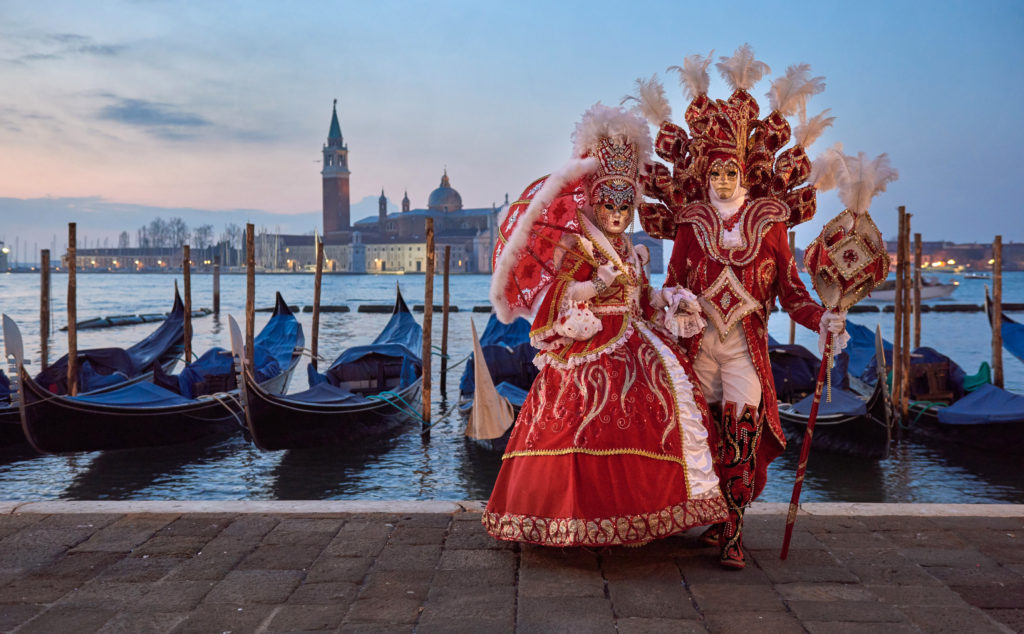
Carnival of Venice
By the eighteens century, Venetians were allowed to wear masks for six months a year. They took advantage to hide their identities; it was in this period that Casanova spent his life in Venice between wild parties and love affairs. And it attracted revelers from across the world, including smugglers, prostitutes, and thieves who had their own reasons for disguise.
With the Austrian conquest of Venice in 1798, Carnival was outlawed and the use of masks was forbidden. The festival reappeared gradually in the nineteenth century, but only for short periods. In the 1930s, Mussolini banned it altogether. In the present form, Carnival was reintroduced in 1979 as a spectacle for the tourists.
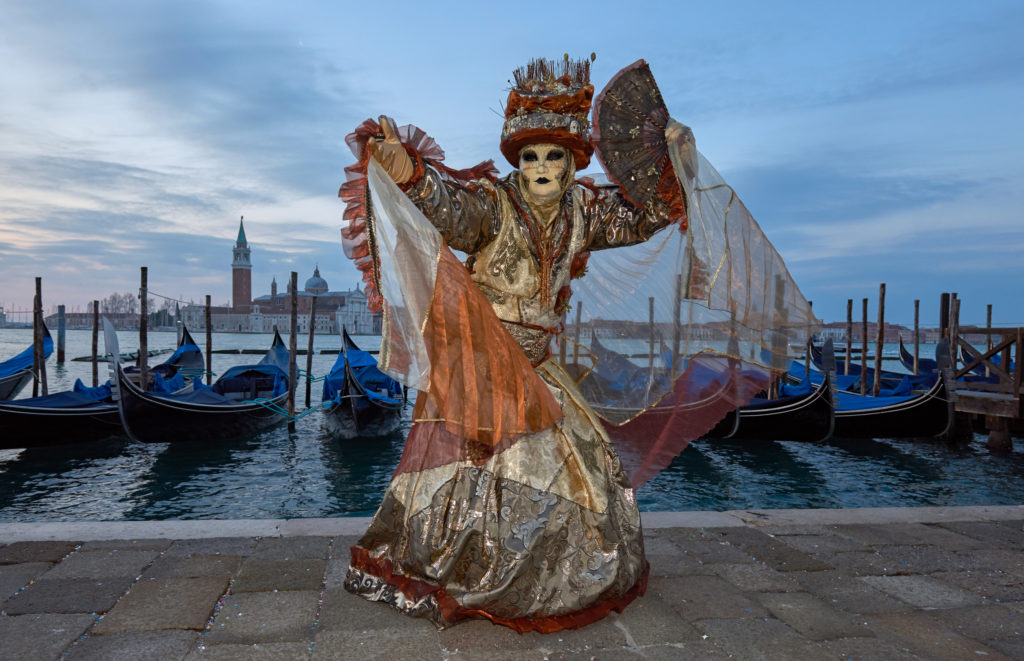
Carnival of Venice. Model: Thierry Walthery
I am glad that I booked a masterclass with the internationally renowned photographer John McDermott organized by the IF/Academy , which I knew from their summer school in Trentino-Alto Adige, Italy. The workshop gave me the final boost to visit Venice during Carnival. John speaks Italian fluently and has a talent to “break the ice”, something that is hard to learn and impossible to copy. But that’s exactly why I like to travel with a guide, in particular when there is a language barrier. Thus, opportunities have arisen that otherwise would have been kept behind closed doors.
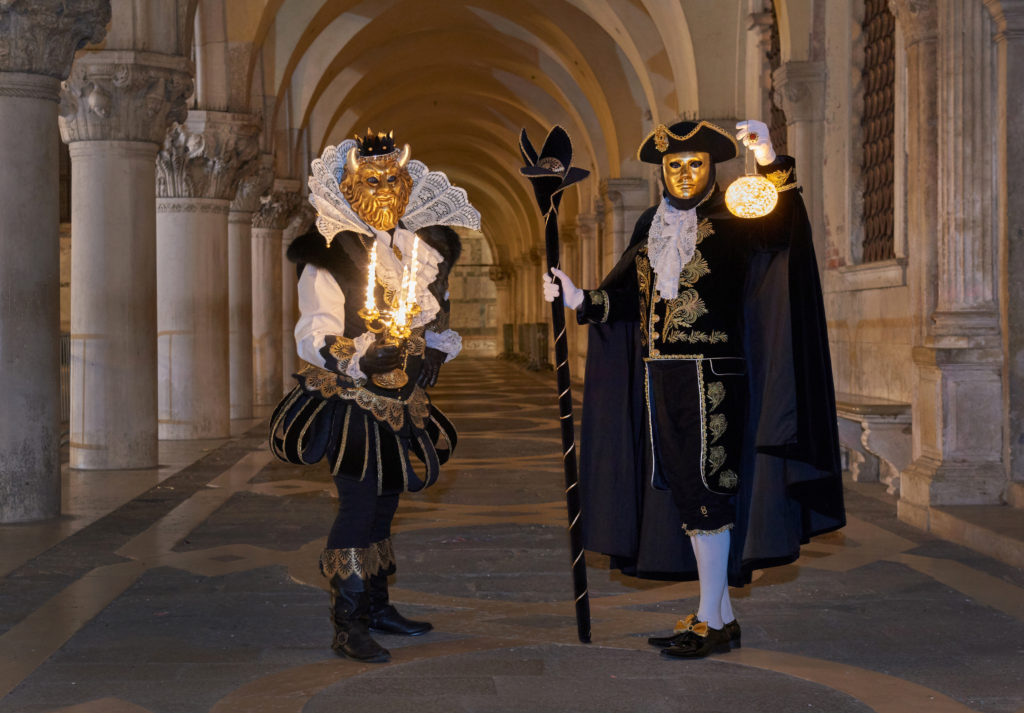
Carnival of Venice
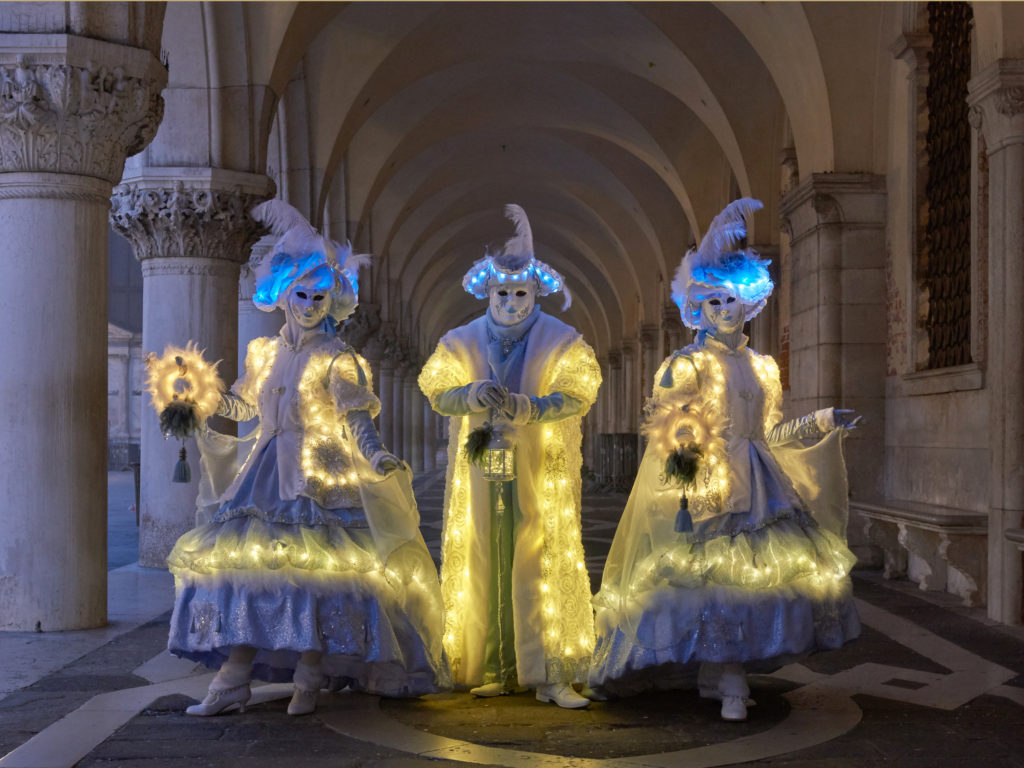
Carnival of Venice. Models: Dadine Degroote
Interesting enough, the most elaborate costumes and masks were often worn by French people; this made communication easy for me as well. The models appreciate being photographed in a professional manner and often ask for a copy of their image by email. As one termed it: without photographs we do not exist.
Not only during Carnival there is an abundance of cheap masks from China, sold by street vendors. Genuine Venetian mask-making was only resumed in the 1980s; they feature prominently in the films Eyes Wide Shut and Casanova. One of the stores that supplied masks for these films is Kartaruga in the Castello neighbourhood. This Venetian shop has a large selection of Carnival and masquarade masks; they are handcrafted in the workshop right there. On the Saturday morning, which is probably the most busy time of the year, Franco showed us the steps in mask making with great enthusiasm.
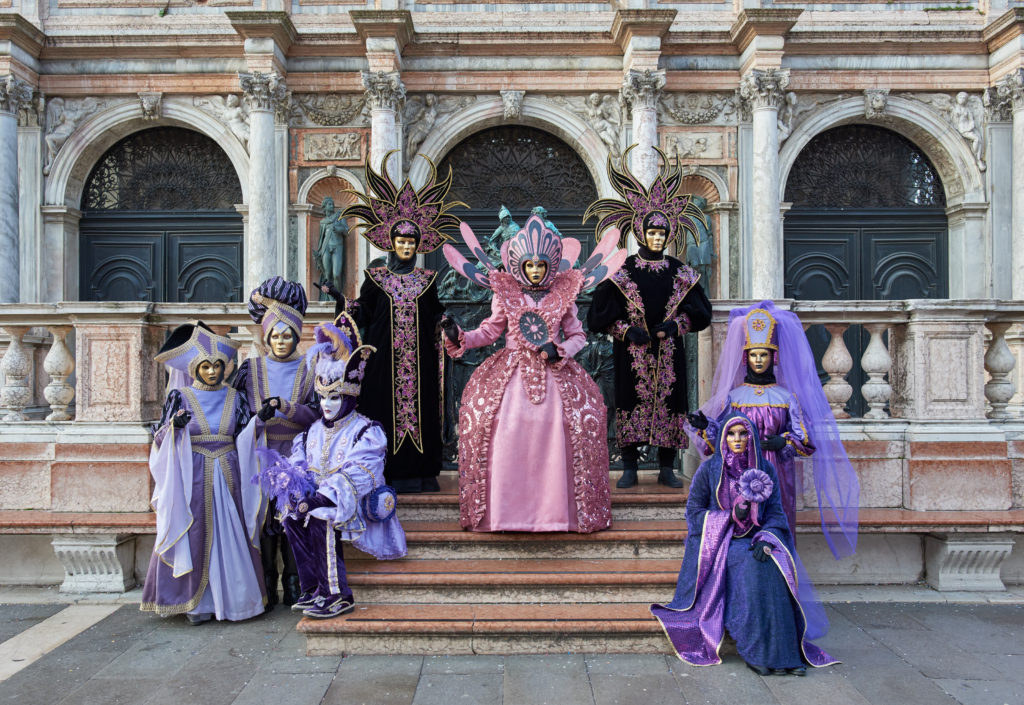
Carnival of Venice
On the technical side, I used the Nikon D810 mostly with the 24-70 f/2.8 lens. Although not my favourite lens* it’s the most practical. Given the tight space left by the other photographers and “instagramers”, it is simply impossible to zoom with the feet. After some experimenting, I settled with 0.3-0.7 of a stop lower exposure for preserving the mood of early morning (the action starts at the Piazzetta around 6:30) and for keeping enough highlight head-room. ISO 800, making use of ISO invariance , and aperture 5.6 resulted in exposure times of 1/4 to 1/30 of a second, which is just enough to prevent motion blur in the models but not enough for avoiding softness from mirror slap and camera movement. So a heavy tripod and mirror lock-up is a must. Nikon, we request IBIS; sooner than later for not switching to Sony.
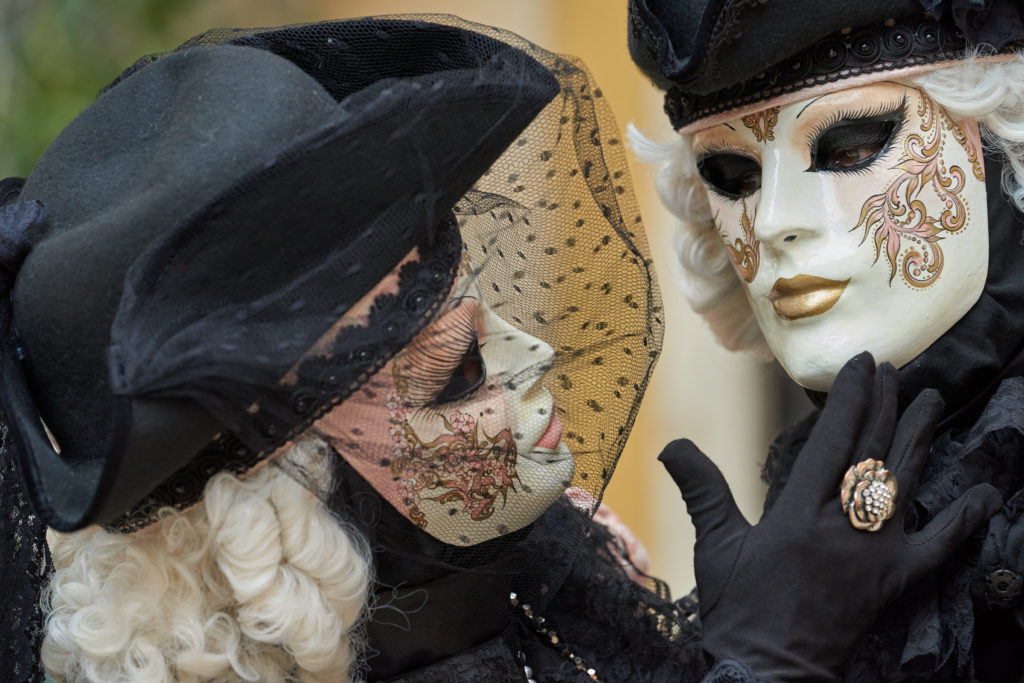
Carnival of Venice. Models: Thierry & Carmela Walthery.
With these settings the models “fell” 2-3 stops below the average meter reading (zone III). I added fill flash (Nikon SB910) on the second curtain, slightly off to the left by means of a sync cable. The flash illumination was dialed down by 1.7 stops to remain credible and avoid excessive subject isolation; hence also aperture 5.6 because I don’t like too much bokeh in environmental portraits. The final adjustment was done in CaptureOne by pushing the shadows by about a stop. In some cases, ugly reflections from the flash had to be cloned out using Photoshop. Next year I must bring studio equipment.
When the sun was out at around 8:00, I changed to my preferred portrait lens, the 70-200 f/2.8, and concentrated on tighter head shots. At 9:00 it was time for the first Espresso. SR
* All other lenses that I own, i.e., the 14-24 f/2.8, 70-200 f/2.8, 28 f/1.4, 45 PC-E outperform the mid-range zoom in the respective focal length by quite a margin.
The official web site is of the Venice Carnival is http://www.carnevale.venezia.it.
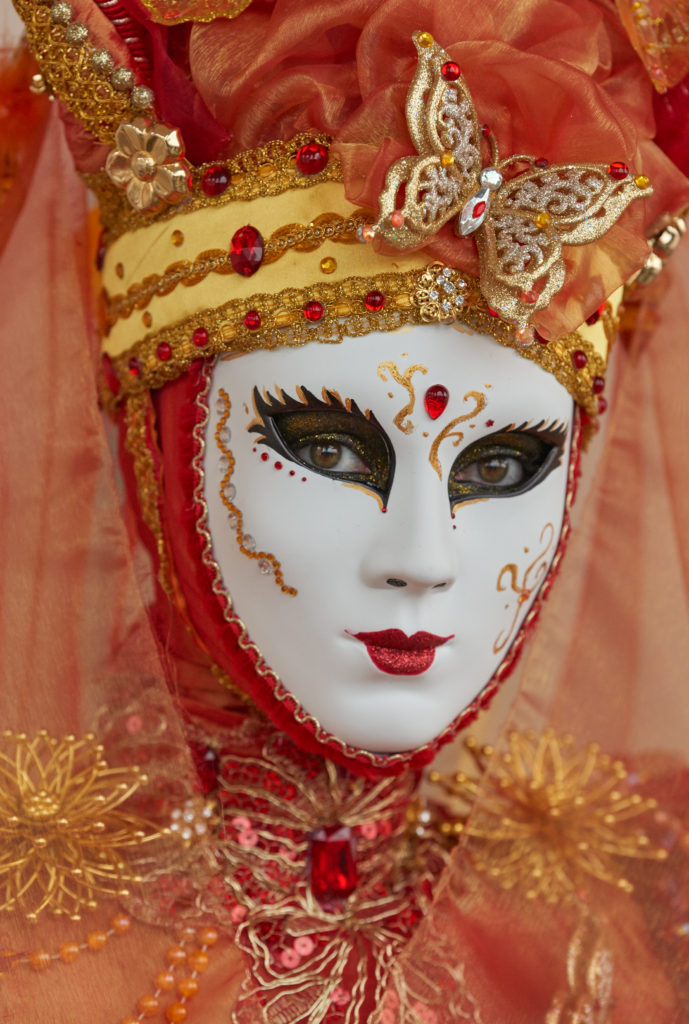
Carnival of Venice. Model: Myriam Melhem
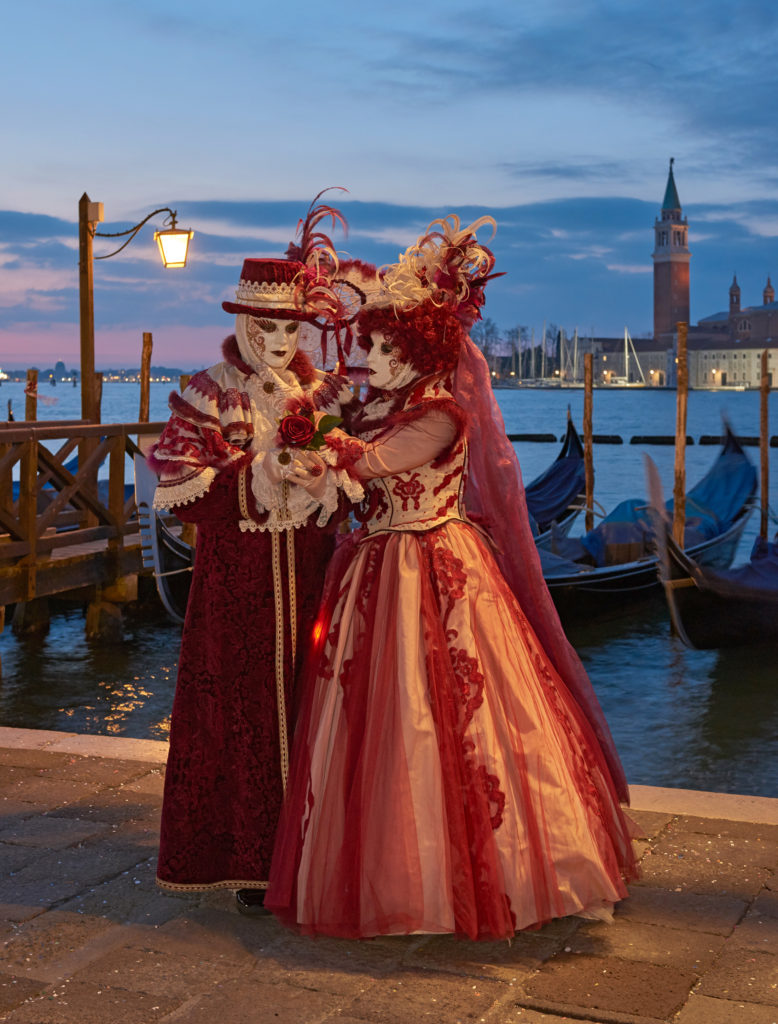
Carnival of Venice. Models: Gabriele Schnicke & Bernd Krauss
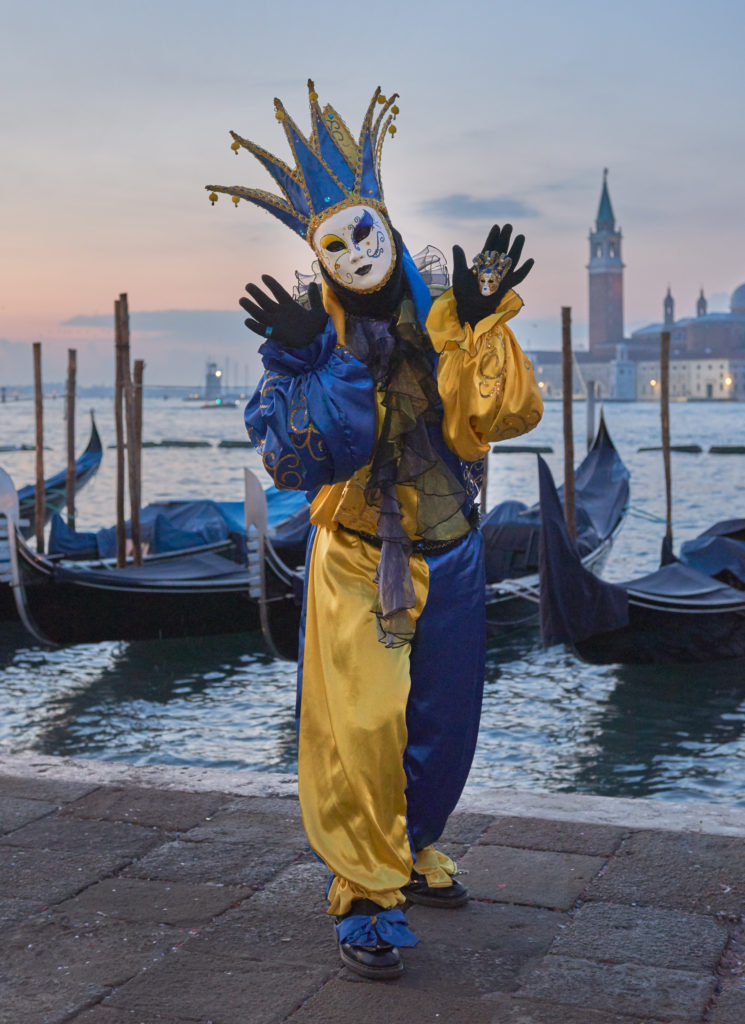
Carnival of Venice
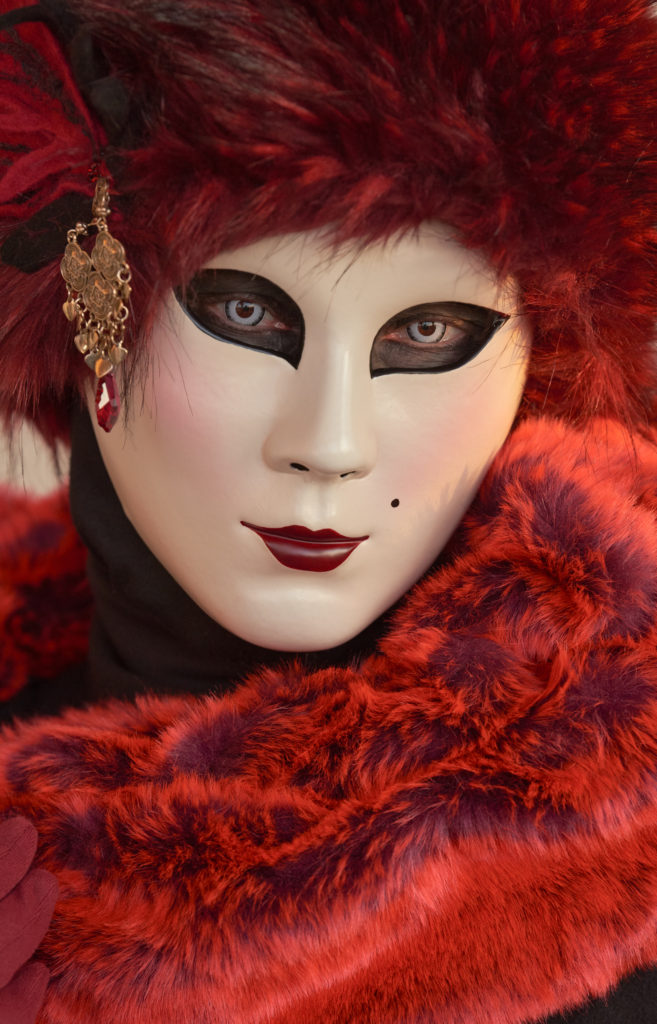
Carnival of Venice
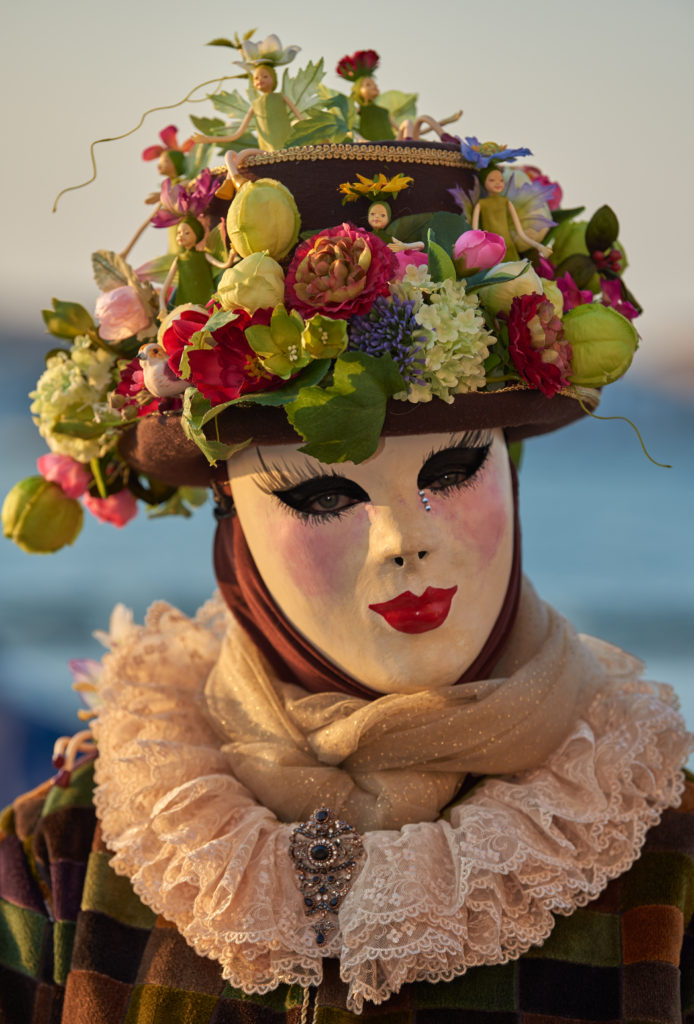
Carnival of Venice. Model: Anne-Laurence, Le Jardin des Fees
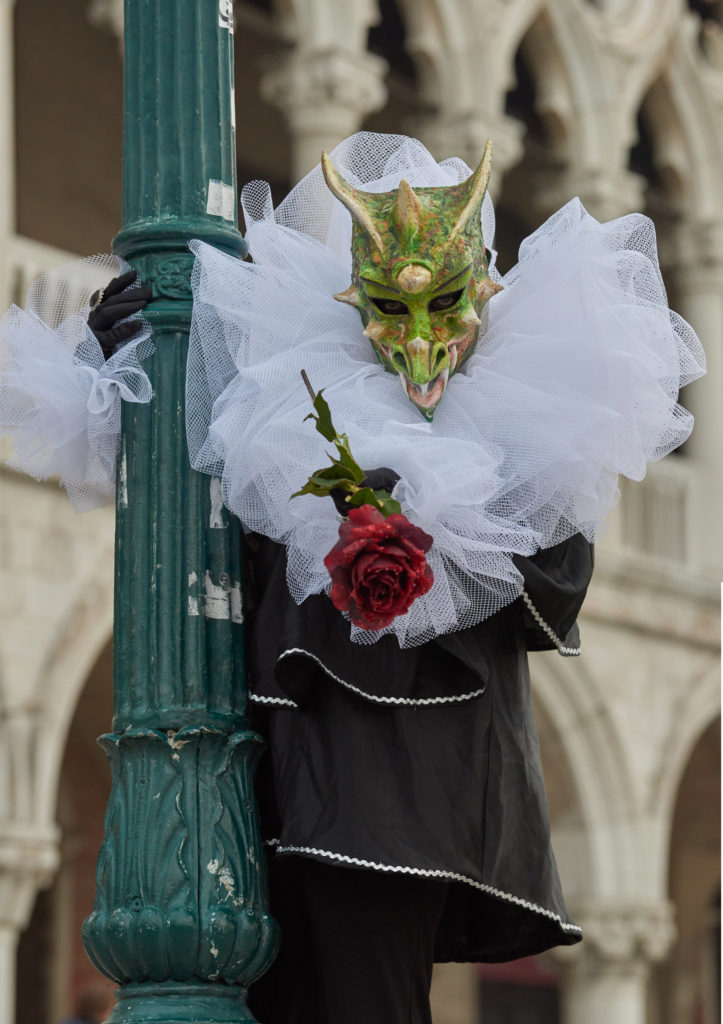
Carnival of Venice
3 Comments
Un grand merci pour toutes ces belles photos ! Que de beaux souvenirs !
Pleasure, hope to see you next year. Stephan
Well done, Stephan. Very successful pictures from Venice accompanied by a very well-written and informative text. Thanks.